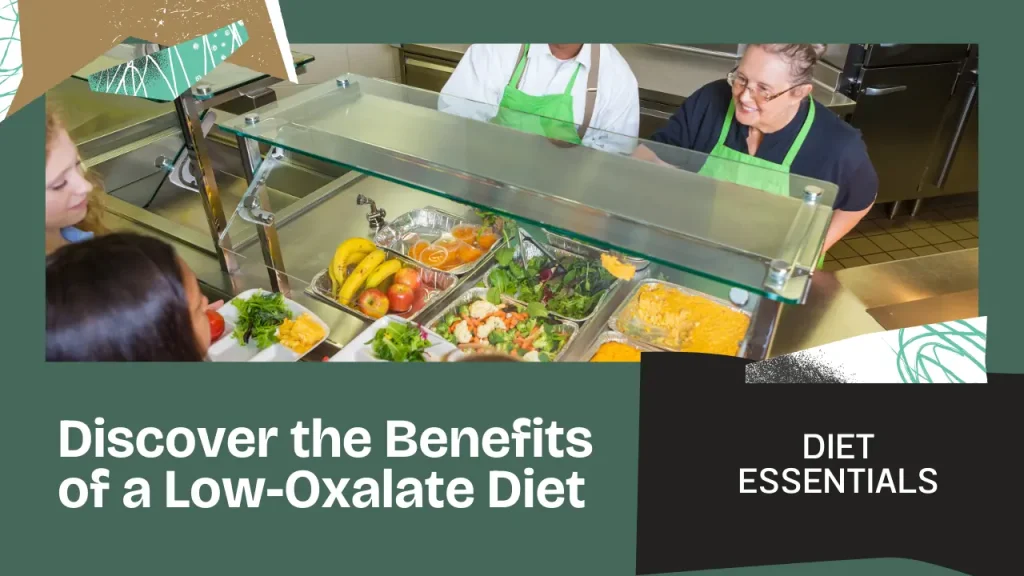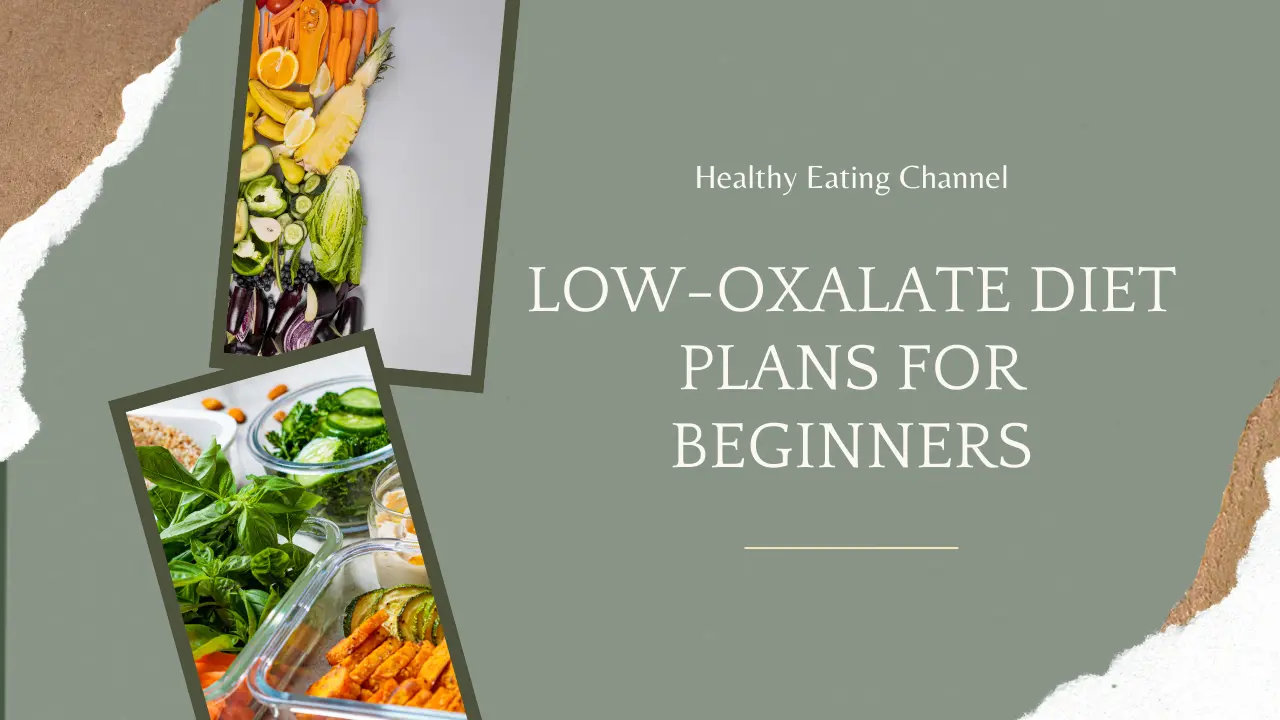Kidney stones are no joke—trust me, I’ve been there. That sharp, unexpected pain had me clutching my side and Googling everything I could about what caused it. Turns out, a little thing called oxalate was quietly making trouble behind the scenes. That’s when I discovered the power of a low-oxalate diet plan, and let me tell you—it changed everything.
If you’ve been warned about calcium oxalate stones or simply want better diet for kidney health, this guide is for you. I’ll walk you through what I’ve learned, what to eat (and avoid), and how small food swaps can make a big difference. We’ll even peek into tasty low-oxalate recipes you’ll actually want to try.
Stick around—you’re about to get a practical, beginner-friendly roadmap that helps you eat smarter, feel better, and steer clear of those sneaky oxalate-rich foods. Let’s dive in.

What Is a Low-Oxalate Diet Plan?
Okay, so what exactly is a low-oxalate diet plan? In simple terms, it’s all about cutting back on foods high in oxalates—natural compounds found in many plants. Your body doesn’t really use oxalates, so it just sends them out through urine. But here’s the catch—when oxalates mix with calcium in your kidneys, they can form calcium oxalate stones (yes, those pesky kidney stones I mentioned earlier).
A low-oxalate diet plan helps reduce the risk of those stones forming. It’s not about cutting out everything delicious—just being mindful. And if you’ve had kidney issues before, especially those related to oxalates, this plan could be a game-changer for your overall diet for kidney health.
Why Oxalates Matter: A Quick Look
Let’s take a closer look at why oxalates are a big deal. Think of oxalates like tiny puzzle pieces. On their own, they’re fine. But when they meet calcium in the kidneys, they can stick together and create sharp little crystals. Ouch, right? That’s where oxalate and calcium absorption comes in—if your body absorbs too much of both, it increases the chances of stone formation.
So if kidney stone prevention is on your mind, watching your oxalate intake is a smart move. It’s like steering your body away from a traffic jam before it even begins. And trust me, prevention feels a lot better than treatment.
Oxalate-Rich Foods to Watch Out For
Now for the big question—what should you be watching out for? There are plenty of oxalate-rich foods that might surprise you. Some are even considered “healthy,” but they’re not so kidney-friendly if you’re sensitive to oxalates.
Here are a few high-oxalate vegetables and common foods to avoid or limit:
- Spinach
- Beets
- Almonds
- Sweet potatoes
- Rhubarb
- Dark chocolate
- Bran flakes
- Tofu
- Black tea
These fall into the “foods to avoid on a low-oxalate diet” category—not forever, but at least until you’ve got things under control. I used to snack on almonds thinking I was being healthy… little did I know they were fueling my stone problem. It’s all about knowing what’s on your plate.

What You Can Eat: Low-Oxalate Food Swaps
The good news? There are plenty of tasty swaps that keep your meals delicious and safe. A low-oxalate meal plan doesn’t have to be boring. It’s all about smart choices.
Here are a few food swaps I personally use:
- Instead of spinach, try lettuce or kale
- Swap almonds for pumpkin seeds
- Trade sweet potatoes for white potatoes or carrots
- Replace black tea with herbal tea or green tea (in moderation)
- Use white rice instead of brown rice (yes, it matters!)
Keep an eye on the oxalate content in food, and you’ll start to feel more in control of your meals. The goal isn’t perfection—it’s balance. With just a few changes, you’ll barely notice you’re following a “special” diet.
Sample Low-Oxalate Meal Plan (Beginner-Friendly)
To make things even easier, here’s a beginner-friendly low-oxalate meal plan that I actually enjoy myself. It’s simple, tasty, and doesn’t feel restrictive.
Breakfast
– Scrambled eggs with white toast
– Fresh pear slices
– Herbal tea
Lunch
– Grilled chicken wrap with lettuce and cucumbers
– Side of white rice
– Water with lemon
Snack
– Pumpkin seeds or a banana
– Low-fat yogurt
Dinner
– Baked salmon with steamed carrots and white potatoes
– Mixed fruit salad
– Chamomile tea
Every meal is low in oxalates, easy to prepare, and rich in flavor. You’ll also notice it includes a variety of nutrients—important when you’re trying to follow low-oxalate recipes without sacrificing health or taste.
Easy and Tasty Low-Oxalate Recipes
Let’s be honest—any diet becomes hard to follow if the food is bland or boring. That’s why I made it a mission to find low-oxalate recipes that are both simple and satisfying. These are a few of my go-to dishes when I want something quick, tasty, and kidney-friendly.
1. Carrot and Apple Smoothie
Great for breakfast or a mid-day boost.
- 1 medium carrot (peeled and chopped)
- 1 apple (cored and sliced)
- 1/2 cup plain yogurt
- 1/2 cup water
- A pinch of cinnamon (optional)
Blend everything until smooth. It’s creamy, lightly sweet, and naturally low in oxalate content.
2. Chicken and Rice Bowl
- Grilled chicken breast
- White rice (cooked)
- Steamed green beans
- Olive oil + lemon juice for flavor
It’s a great combo that’s filling and keeps you full of energy without the oxalate overload.
3. Roasted Carrot Soup
- Carrots, onion, garlic
- Low-sodium chicken broth
- A splash of milk (optional for creaminess)
Roast the veggies, blend them up, and heat with broth. This warm bowl feels like a hug on a cold day—and yes, it’s super gentle on the kidneys.
These low-oxalate recipes prove that healthy doesn’t have to mean tasteless. You’re not just eating for kidney stone prevention—you’re enjoying every bite.
Helpful Tips for Sticking to a Low-Oxalate Diet
Making changes to how you eat can feel overwhelming at first—but trust me, it gets easier. Here are a few tips I picked up that helped me stay consistent with my low-oxalate diet plan without stress.
Start slow.
You don’t have to toss everything in your kitchen on day one. Begin by swapping out one oxalate-rich food at a time, like replacing spinach with romaine or kale.
Plan your meals.
Having a low-oxalate meal plan for the week helps avoid last-minute food choices that might not be kidney-friendly. It also keeps grocery shopping way simpler.
Hydration is key.
Drinking plenty of water helps flush out oxalates before they get cozy with calcium. Think of it as rinsing your kidneys clean.
Pair calcium wisely.
Eating calcium-rich foods with moderate oxalate foods helps prevent them from binding in your kidneys. This smart move supports better oxalate and calcium absorption.
Read food labels.
Some packaged foods sneak in high-oxalate vegetables or additives. A quick glance at the ingredients can save you some pain later.
Remember, this isn’t about being perfect. It’s about progress. Each mindful bite is a step toward better diet for kidney health.

When to See a Doctor or Dietitian
Now, a quick but important reality check. Not everyone needs a low-oxalate diet plan, and even if you do, it’s always best to talk with a pro. I spoke to a dietitian after my second kidney stone, and honestly? It was the best decision I made.
A healthcare provider can test your urine and help you figure out if oxalates are actually the culprit. Some people form calcium oxalate stones, while others have different causes entirely. The point is—you want your plan to match your body’s needs, not just internet advice (even mine!).
If you’re dealing with recurring stones, digestive issues, or just want the most accurate info, make that appointment. Personalized guidance can make your journey smoother and safer. Plus, it’s a great way to double-check that your diet for kidney health is on the right track.
Conclusion
So, we’ve covered a lot—but it all comes down to this: a low-oxalate diet plan isn’t some strict, joyless menu. It’s a smart, flexible way to eat that supports your kidneys and helps you feel better.
You’ve got the basics—what oxalates are, which foods to avoid on a low-oxalate diet, how to swap smart, and even what to cook. And if you’re anything like me, this guide might just save you from another run-in with those painful calcium oxalate stones.
Ready to take the first step? Try out the low-oxalate meal plan above or whip up one of the recipes. And if you’re unsure, check in with a dietitian who can give you personalized advice.
FAQs
Q1. What is a low-oxalate diet plan?
A low-oxalate diet plan limits foods high in oxalates to help lower the risk of calcium oxalate stones and support better kidney health.
Q2. Who should follow a low-oxalate diet?
People with calcium oxalate stones or those wanting to prevent kidney stones may benefit from a low-oxalate diet plan.
Q3. What are oxalate-rich foods to avoid?
Oxalate-rich foods include spinach, beets, almonds, sweet potatoes, and black tea. These foods can raise the risk of kidney stone formation.
Q4. Can a low-oxalate diet help with kidney stone prevention?
Yes, reducing high-oxalate foods can lower the risk of calcium oxalate stones and support long-term kidney stone prevention.
Q5. What are some low-oxalate food swaps?
Swap spinach for lettuce, almonds for pumpkin seeds, and sweet potatoes for white potatoes to reduce oxalate content in food.
Q6. Are there tasty low-oxalate recipes available?
Yes, there are many easy low-oxalate recipes using safe foods like eggs, carrots, white rice, and grilled chicken.
Q7. Is it okay to eat some oxalate-rich foods in moderation?
Yes, some oxalate-rich foods can be eaten in small amounts, but it’s best to follow a balanced low-oxalate meal plan.
Q8. How does oxalate and calcium absorption affect kidney health?
When oxalates mix with calcium in the kidneys, they may form stones. Managing both supports better diet for kidney health.
Q9. What drinks are safe on a low-oxalate diet?
Drink water, herbal teas, or green tea in moderation. Avoid black tea, which is high in oxalates.
Q10. When should I talk to a doctor or dietitian about this diet?
If you’ve had kidney stones or want a diet for kidney health, speak with a doctor or dietitian before starting a low-oxalate diet plan.

